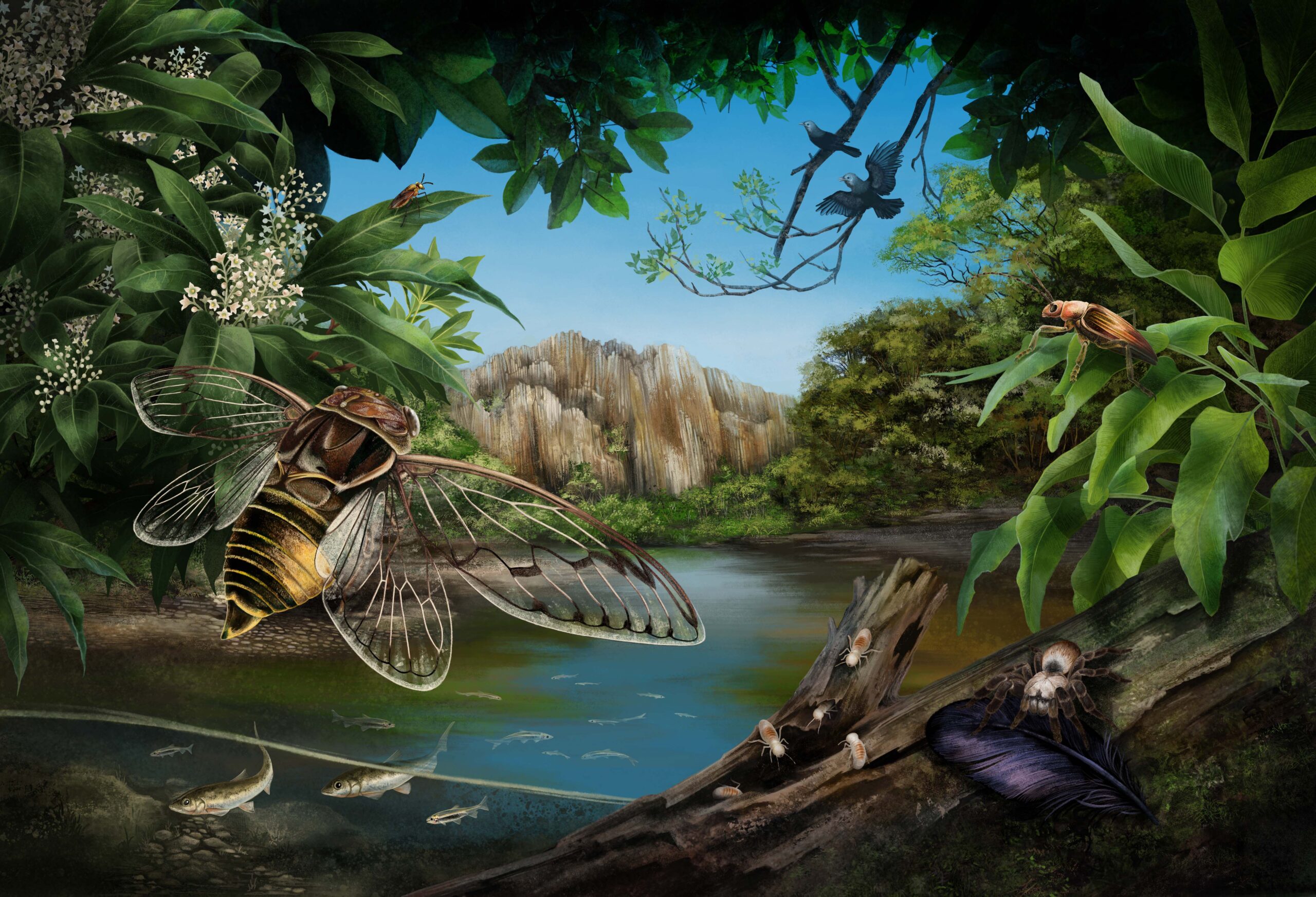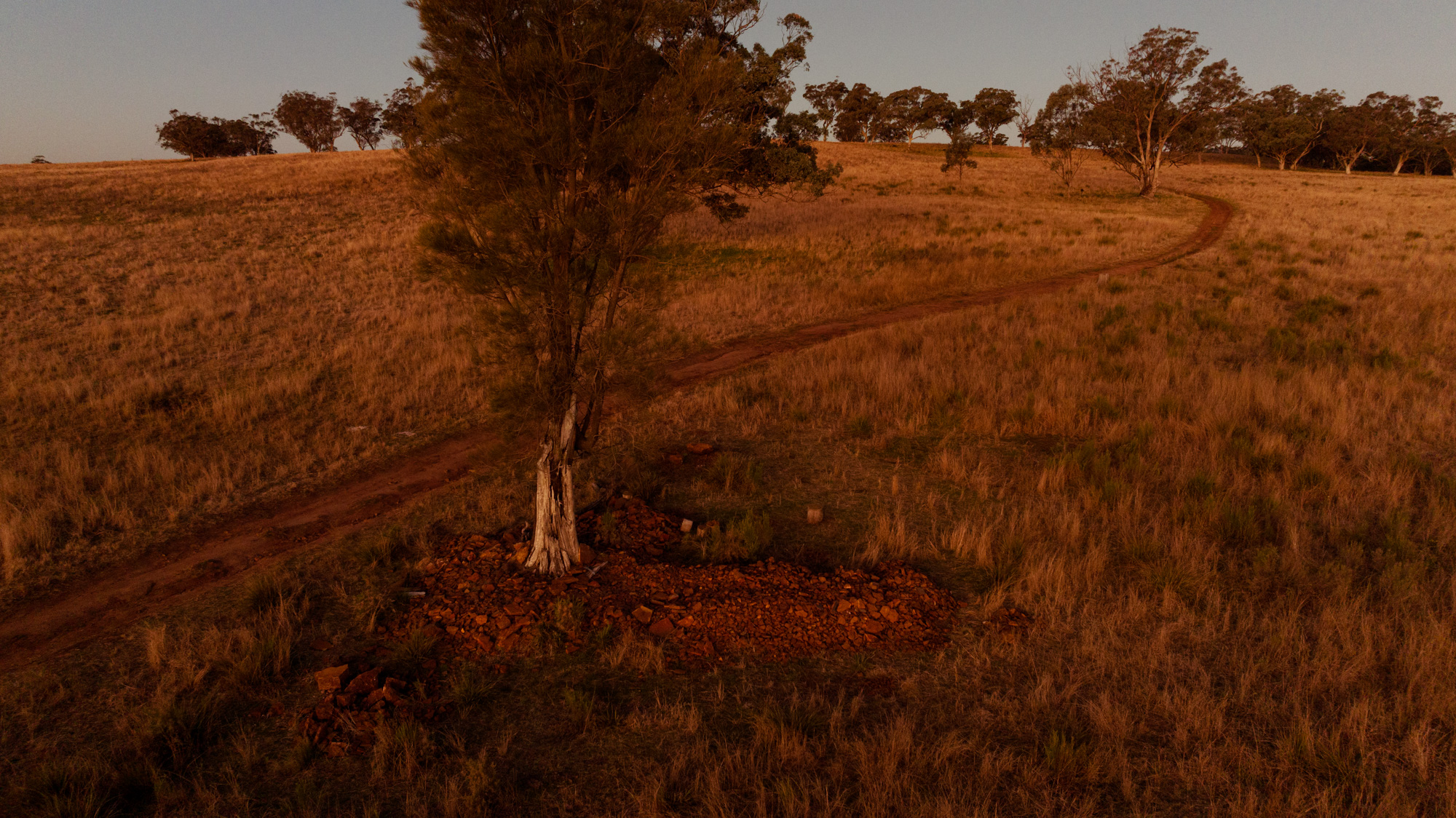In the current issue of AUSTRALIAN GEOGRAPHIC I spoke with Melbourne-based artificial intelligence (AI) photo artist, Morganna Magee, who deliberately makes her images imperfect to impart an “uncanny” feel and to draw the viewer’s attention to their artifice. Morganna is a conservation photographer whose better-known analogue work celebrates the beauty of kangaroos in the hope that more people will advocate against their culling and harvesting for pet meat and leather goods. In her AI image above Morganna creates a humanoid kangaroo warmly embracing a person who, on closer inspection, appears part animal, forcing the viewer to imagine themselves as a kangaroo, the very definition of empathy.
Morganna says she uses AI to supplement what wildlife photographers are already doing to celebrate the wonder of the natural world. She manipulates images to heighten our emotional response – never intending that the viewer think the work is real. In this image, for example, she purposely misplaces an eye and merges a human arm with that of a kangaroo. The background is imperfectly rendered to emphasise the scene’s fabrication.
“I’ve always believed in the power of photography to change things, but its getting harder as we move along as a society,” Morganna says. “Maybe AI is a tool that can help with that. With the flood of citizen photography, wildlife tourism and the rapid way in which we consume imagery, we’ve become a bit sanitised to what we’re seeing. It’s an echo chamber, and different imagery is needed to reach beyond it.” Morganna considers AI to be another visual culture tool, hoping its ability to draw emotions from an audience and heighten our empathy for animals such as kangaroos can only be a good thing.
American photographer Philip Toledano creates deliberately absurd scenes in his series Another America and has become the ‘whipping boy’ for AI. I had showcased Toledano’s incredibly moving personal project documenting his father’s final days while I was working in a previous picture-editor role. Intimately photographing a loved one’s death is as visceral and real as it gets. Fast forward 15 years, and Toledano is creating fictional worlds set in 1940s and ’50s America where apes are sentient beings living amongst us. He uses Midjourney, an AI generator, that Toledano says is like working “with a very talented but very drunk person, and you have to kind of bludgeon it into giving you what you’re asking for”. Toledano explores a post-truth world, deliberately setting his work in the golden era of 1950s photojournalism when truth, he says, was “biblical in its veracity”.
Although he doesn’t regard his creations as photography any more, referring to it as ‘photography adjacent’, the work looks enough like photography to make him the subject of hot debates in photo forums. Toledano sees Midjourney as working in the same way as a photographer works, in that any image that is created is a unique image that is the sum of every other image it has been exposed to, or – in the case of a photographer – of everything they have seen in their life.
In April this year the whole highly charged debate around AI and documentary photography intensified when respected photojournalist and long-time National Geographic Explorer Michael C. Brown published some images of Cuban refugees crossing the 90 miles of ocean separating Havana from Florida.
Although Brown was very clear that he used AI and presented the imagery as photo illustration, his background as a photojournalist led many people to question his integrity. His response was, “This is not journalism, this is storytelling”.
For the past few decades, working as a photo editor on magazines and newspapers, I have seen a distinction, like Michael C. Brown, between journalistic stories and conceptual storytelling. For straightforward reporting, documentary and news stories, there are strict ethical parameters around any assignment. Removing or inserting elements in the image are regarded as violating the industry standards of truth and accuracy in photojournalism. Images are not modified once they are made, except for colour correction, contrast, removal of dust and cropping.
The nature of published photography as a real-world documentary record, with all those layers between what is seen in front of the lens and how a photo is eventually realised on the page, is incredibly complex.
There is always the perspective perceived by the photographer, the style, the approach and the interpretation. Lens choice, what to show and what to exclude in the framing, editing, toning and sequence – all are inherently manipulative. Photo editors choose photographers for a look or feel, and that has inevitably a point of view.
How to keep photography honest has long been a question, well before the advent of Photoshop. National Geographic ignited a fiery debate on the topic after their controversial 1982 cover, where they moved two pyramids closer together to fit the constraints of the cover.
The history of doctoring photos dates back to the earliest days of the photograph. Stalin routinely air-brushed his enemies out of photos, Mussolini had a horse handler removed from a heroic portrait of himself, and China’s ‘Gang of Four’ disappeared from a photo of a memorial ceremony for Mao Zedong.
Life magazine removed a fence to give a 1970 Pulitzer Prize–winning photo of student deaths in the Kent State University protest more impact, and photographer Steve McCurry, best known for his photo of the Afghan girl on the 1985 cover of National Geographic, was accused of breaching photojournalism ethics. McCurry heavily edited his images, even removing people, later leading him to define his practice as ‘storytelling’ rather than ‘photojournalism’.
Wildlife photographer Art Wolfe came under criticism for cloning animals to fill spaces and it was revealed that he had altered a third of his images in his celebrated 1994 book Migrations.
Last year a stunning, and – in hindsight – implausible photo of an elusive snow leopard near Mount Everest proved too good to be true.
Proliferating ‘photography game farms’ further muddy the field for truth telling in nature photography; they enable photographers to stage a photograph, with handlers moving the animal around to look as if they were photographing in the wild.
World Press Photo winner and Australian photojournalist Matthew Abbott says, “Our great asset as documentary photographers is our integrity. This cannot be replaced by AI.” Abbott acknowledges that, “Reality and truth have a complicated relationship with photography…stories with integrity, and photos with integrity, might be a better way to put it.” The types of photography Abbott is referring to are photojournalism, street photography, sport photography – all loosely described as ‘documentary photography’.
We have an expectation that photographs represent the truth, but all images have an agent. “Photography is an incredibly subjective craft. I’ve never met two people with the same truth, nor seen true objectivity ever demonstrably applied to anything,” writes Peter Von Agtmael, a member of the prestigious Magnum Photos agency. “We shouldn’t mistake something factual for something truthful, and we should always question which facts are employed, and how.”
This month a mammoth exhibition on photography opened at the National Gallery of Victoria investigating this very topic, of real versus imagined.
Senior curator of photography, Susan Van Wyk, reflects that, while we have an expectation that photographs represent the truth, she doesn’t know if there is anything that “categorically, hands down, tells you the entire truth of this moment, this event, this person”. The exhibition features works by past photographic greats that call our attention to the artifice of the medium. One of the more famous of these in the show is Robert Capa’s photo, The Falling Soldier, notorious after allegations that the photo was faked.
In magazines, staged photography has also long held a place and been showcased. For opinion pieces and commentary content, photographs often engage people in a different way via stylised set-up photos or sourced through a stock agency, sometimes producing a fictional scene to realise conceptual ideas.
The work of conservation photographer Nick Brandt bears little relation to traditional wildlife documentary. He uses highly conceptual approaches to surprise and reach audiences. “You have to work harder now to create something different. I only embark on a new project if I feel it’s never been done before,” he says. Brandt constructs elaborate, often composite scenes to portray people and animals that have been impacted by climate change. In his ongoing global series The Day May Break, he even concocted a non-toxic fog, especially for the shoots, to symbolise the rapidly disappearing natural world.
Like this kind of conceptually driven, post-documentary photography, perhaps AI imagery may offer a fresh way to address old themes and generate interest in the cultures of indifference and compassion fatigue. Amber Terranova argues that “artists have an opportunity to reach new audiences by showing them something they have never seen before, by creating more and more attention around a particular subject matter through embracing a new technology”.
Michael Christopher Brown argues that AI can help us report on inaccessible places and is a form of photorealistic exploration of stories that are impossible to tell. For him, collaborating with AI allowed him to tell the story of real Cuban refugees without jeopardizing their safety and trust. Earlier this year AI images, generated from eyewitness testimony collected by lawyers from the firm Maurice Blackburn, were used to show the horrors of offshore detention on Nauru and Manus islands. The law firm’s creative agency worked closely with survivors to fine-tune the images to make sure they reflected their experiences, and used Australian photojournalist Mridula Amin to consult on the project. “If we had just generated these images and not engaged with the survivors, this campaign would have felt very thin and would have felt less ethical,” the campaign’s creative director Gavin Chimes says.
From Australian Geographic’s perspective, does AI-generated imagery give our readers the opportunity of imagining something that is impossible to witness, because of either inaccessibility or risk to the subject? AUSTRALIAN GEOGRAPHIC has long used hyper-realistic illustrations to help us imagine long-lost worlds or vulnerable species. In 2022 our photographer Max Mason-Hughes visited a dry rock paddock, outside Gulgong in NSW, as part of an archaeological dig team, and discovered the remains of a 15-million-year-old billabong. Our illustrator Franz Antony was able to bring the ancient billabong to life, showing how the site was once a tropical rainforest full of flora and fauna.


Perhaps photo realistic ‘reportage illustration’ via AI may allow us to showcase vulnerable species that are difficult to access, or would place the animal under stress to be traditionally photographed. With such large swathes of Australia under pastoral lease, many of Australia’s threatened species are out of sight on private property or in areas restricted for their protection. A prime example are the remaining 315 northern hairy-nosed wombats protected in two rural Queensland properties run by Australian Wildlife Conservancy. Australian Geographic recently shared Brad Leue’s remotely captured photos of this critically endangered species on large digital screens around Australia; the animals were impossible for the photographer to access in person.

Like Morganna, I can see that AI, or synthetic image making – perhaps we shouldn’t call it photography – has value as an add-on to traditional documentary. If AI imagery can be used as a tool leading to positive change by drawing attention to the pressing issues of our day, then embracing AI is surely worth it, but rest assured, we won’t be using it to replace our talented photographers in the field any time soon.

